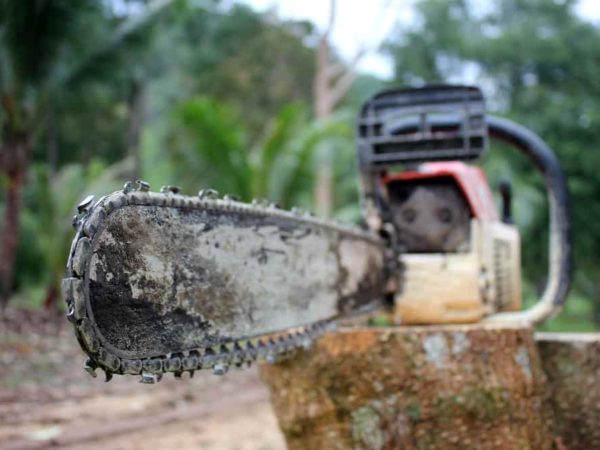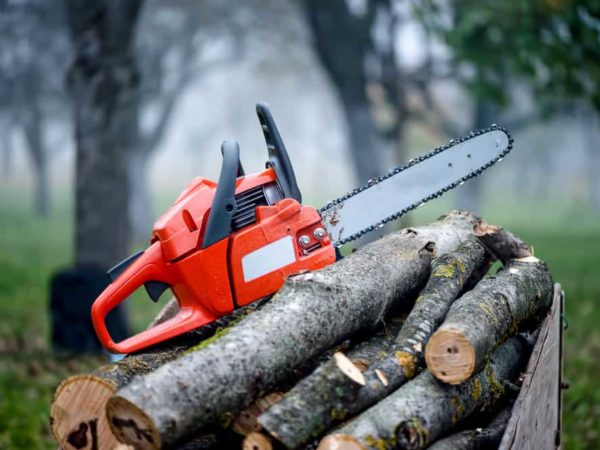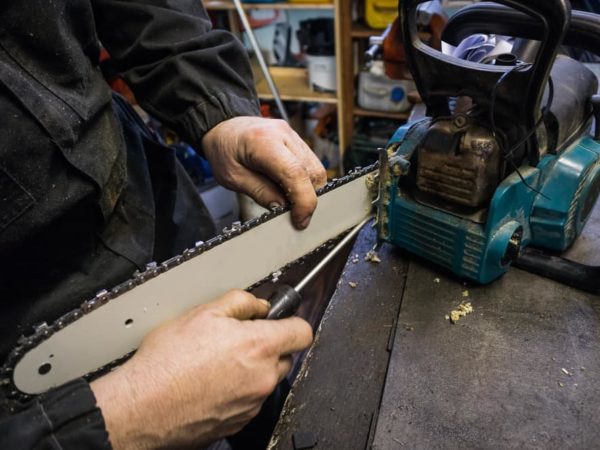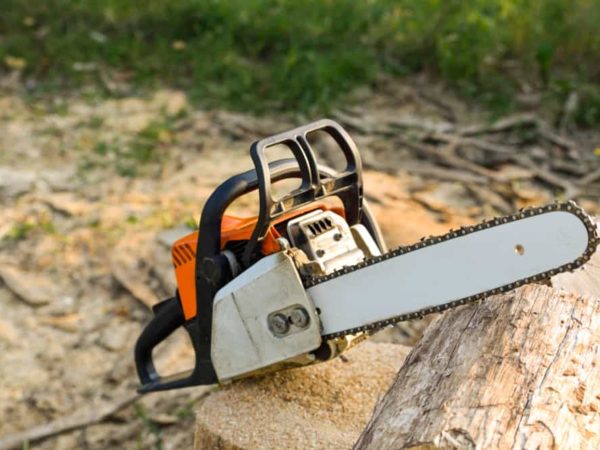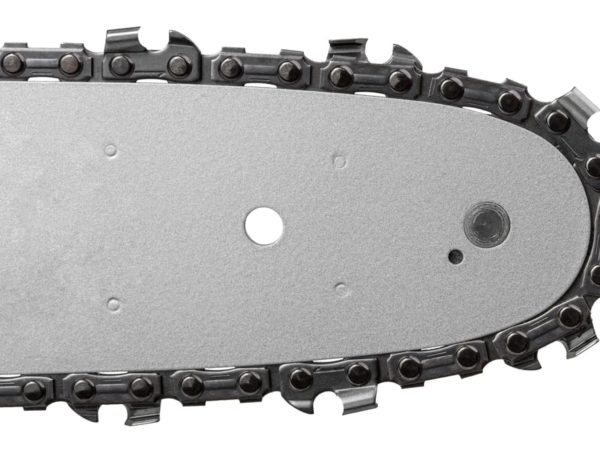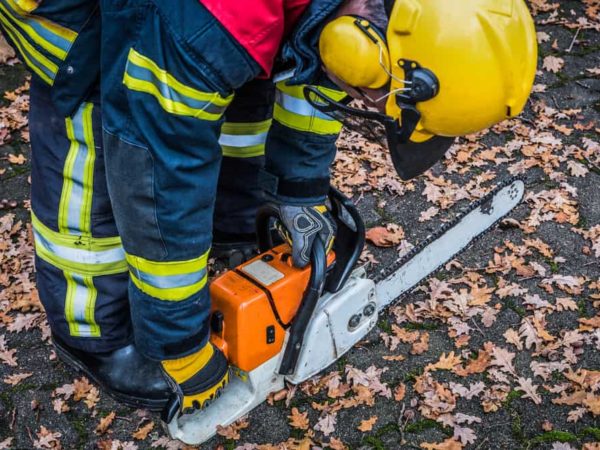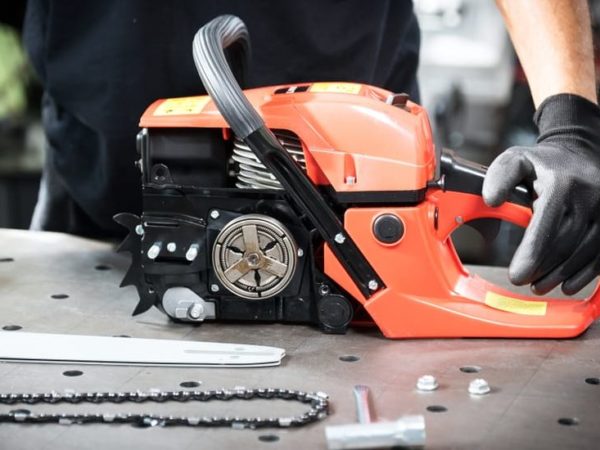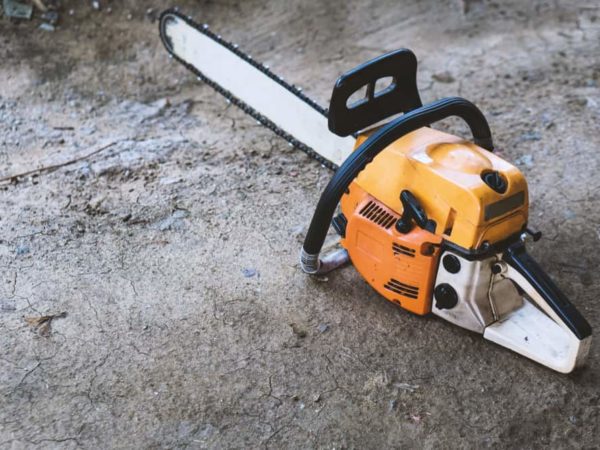Chainsaws are highly practical tools that allow us to take care of yard maintenance, fell trees, clear up after storms, chop up firewood and so much more. There are many kinds, from small electric versions to large commercial-grade monsters, and there is just as broad a range of operators, from the casual home user to the professional arborist or lumberjack.
We are now so used to chainsaws that many of us take them for granted, but have you ever wondered about when the first chainsaw was invented? If you are curious about the birth, development and history of this iconic tool, we have all the information you are looking for.
If you want to have a look at some of the models that have existed through the years, check out this quirky video about a chainsaw enthusiast and his extensive chainsaw collection.
Table of Contents
Precursors to the chainsaw
When we think of modern chainsaws, we imagine gas-, electricity- or battery-powered machines with chains spinning around bars that are used to fell trees and cut up wood. However, at the beginning, the precursor to the modern chainsaw was invented for a rather more gruesome purpose.
One ancestor of the modern chainsaw appeared way back in the 1830s, and it wasn’t invented to cut wood but rather to saw through bone.
This instrument, known as the osteotome, is thought to have been invented by a German orthopedist named Bernhard Heine. His bone-cutting device consisted of a chain containing small teeth that was rotated by turning a handle.
However, back in the late 18th century, saws with spinning blades had already been created independently but at around the same time by two Scottish doctors, John Aitken and James Jeffrey.
What were these earliest “chainsaws” used for? Back in the days before the caesarean section, when a baby was unable to pass through the pelvis during childbirth, part of the pelvis would be cut away in a procedure known as symphysiotomy.
So the earliest ancestors of the chainsaw were actually developed to facilitate the removal of pieces of a woman’s pelvis – with no anesthetic – to help deliver babies. What a horrifying thought.
The first saws for woodcutting
Saws with chains were not developed for cutting wood until much later.
In the late 19th and early 20th centuries, some rather outlandish contraptions began to appear in an attempt to mechanize the felling of large trees, something that had been done manually up until that point.
One such machine was the American Riding Saw, a device operated by a man sitting on top and that resembled a rowing boat – although this can’t really be considered a chainsaw.
In 1905, another effort, the “endless chain saw”, was patented by an American, Samuel J. Bens. This could more accurately be described as a chainsaw, but the machine was bulky and impractical and was never used extensively in the field.
Who Invented the “modern” chainsaws?
The man most commonly credited with inventing the modern chainsaw is someone with a name that will still be familiar to anybody who uses these tools today – Andreas Stihl.
Although the company that Stihl founded has gone on to become famous for producing the big and powerful professional-grade gas chainsaws that are now the mainstay of the logging industry, his first invention was actually an electric chainsaw that was patented in 1926.
Three years later in 1929, he followed this up with a gas-powered version – but Emil Lerp, founder of rival chainsaw company Dolmar, beat him to it, having already produced his own gas-powered model in 1927.
These machines are often claimed to be the first modern chainsaws, but they were still a long way from our modern conception of a chainsaw. These saws were large and bulky and required two men to operate them. The first one-man chainsaws did not begin to appear until two decades later, after the Second World War.
One-person chainsaws from the 1940s
With the outbreak of hostilities, Germany and the United States found themselves on opposing sides, which meant German-made chainsaws were no longer readily available in North America.
One result of this was that it stimulated chainsaw innovation in the US, and with advances in materials and manufacturing techniques, two-man chainsaws were gradually replaced by lighter machines that could be wielded by a single operator.
A leap forward in chain design
One final important chapter in the development of the modern chainsaw came in the late 1940s when Joseph Buford Cox, an experienced logger and inventor came up with a significant improvement to the chains that were in use at the time.
As the story goes, one day in 1946 when he was out logging, he paused to reflect on how the larvae of the timber beetle were able to chew through hard wood so easily where metal chains would struggle.
To cut a long story short, he developed a new type of chainsaw chain that mimicked the teeth of the grubs. The chain he developed still greatly influences the design of many modern chains today – and the company he founded to sell them evolved into Oregon, now one of the world’s best-known manufacturers of top-quality chainsaw chains.
So…when was the chainsaw invented?
So now to return to our original question, when was the chainsaw invented?
As we have seen, this is not such a simple question to answer since the chainsaw as we know it today was not suddenly invented from nothing but instead represents the culmination of many small steps and many developments down the years – just like so many other inventions.
We could say that the gory bone-cutting tools of the 18th and 19th centuries were the first chainsaws, or we could suggest that the early mechanical saws for cutting wood at around the start of the 20th century were the original prototypes.
Others might point to the inventions of Stihl and Lerp in the 1930s, and others still might claim the modern chainsaw wasn’t invented until the first one-man saws arrived after the Second World War. There is no single correct answer.
And the future?
In a way, it is irrelevant which of these steps truly represents the first chainsaw since the modern chainsaw is the descendant of all these inventions.
Chainsaws have come on a long way since the first wood-cutting machines of the 1890s and 1900s and continue to develop today – and having seen how the technology has progressed in the last century, we can only wonder about what the chainsaws of tomorrow will look like.
Don’t forget to pin it!








